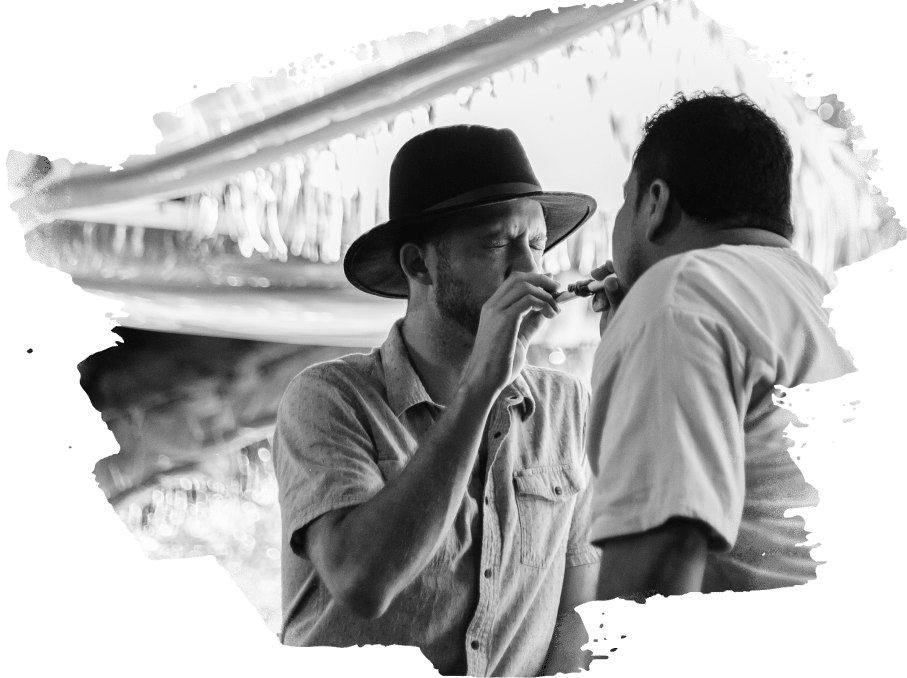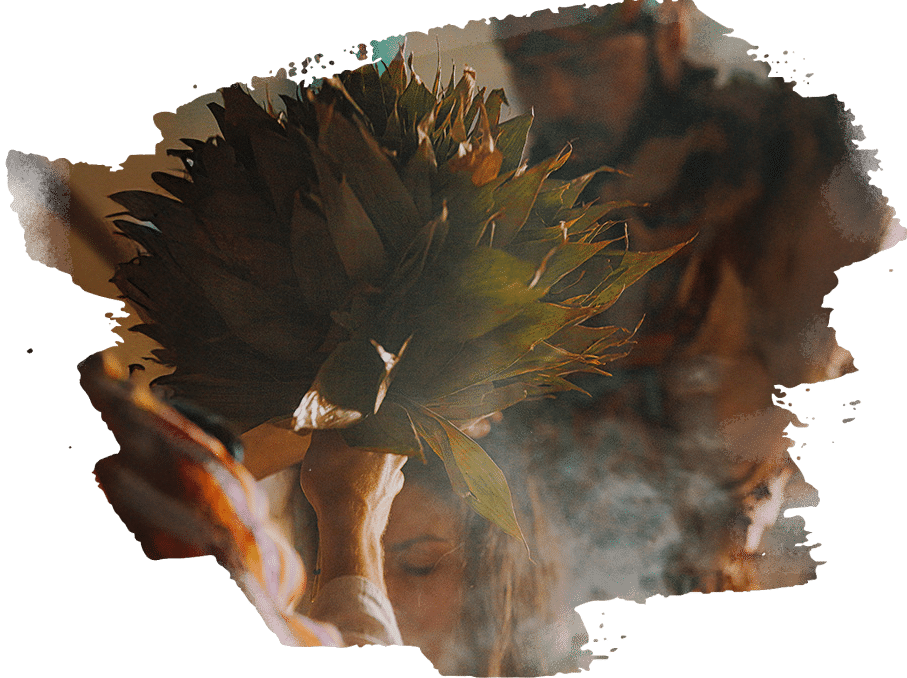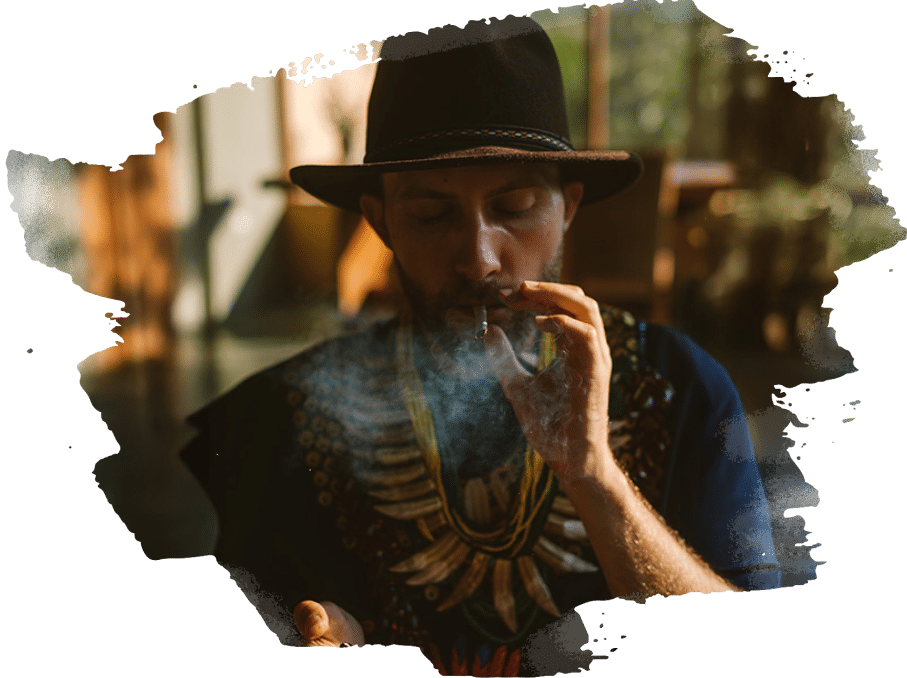Ancient Remedies for Healing


Hape, also known as rape, is a revered traditional snuff from the Amazon rainforest, used by indigenous tribes for centuries in ceremonial practices. This medicine is crafted from finely ground herbs and other plant materials. The primary ingredient in hapé is tobacco and it can be combined with a variety of other plant materials, including seeds, roots, and leaves. This mixture is blown through the nose and is use for cleansing, purification, clarity and spiritual connection. This medicine helps to open our intuition and third eye which can be supportive around the Ayahuasca ceremonies. As well the tobacco spirit is protective energy which helps to fortify our subtle body.

Mambe is a traditional preparation used by various Indigenous peoples in the Amazon basin, especially among the Inga and other communities. It is composed of two components which is ambil a liquid-pasty form of tobacco, traditionally placed on the tip of the pinky finger—the finger of humility—before being consumed in prayer. This is then paired with coca leaf and the yarumo ash which together is the Mambe which comes in a powder form. When they are used together a powerful synergy forms which support us to sweeten communication, speak with a good heart and hold ourselves with good thoughts. The combination of Ambil and Mambe symbolizes the sacred union of the Father Creator, represented by tobacco, and Mother Earth, represented by coca leaf. The mambe has been used by certain tribes are the pillar of their community to connect with the spirits, align the community and perform healing practices.

Ayahuasca, known in some traditions as Grandmother Ambiwaska, is a revered plant spirit with deep roots in the indigenous cultures of the Amazon. For thousands of years, she has been a guiding force in awakening and healing. Grandmother Ambiwaska helps us turn inward, guiding us to reconcile with parts of ourselves that we may have been avoiding. Her wisdom illuminates our path, teaching us to live authentically and from the heart. Often regarded as a purgative in various cultures, Ambiwaska is believed to cleanse us on multiple levels. The notion that the world lives in our stomachs reflects the plant’s profound ability to purify us physically, emotionally, and spiritually. By addressing old traumas and karmic burdens, she supports us in releasing the chains that bind us, facilitating a deeper sense of freedom and transformation.

Ortiga is a class of stinging nettles that the Indians called ‘acupuncture.’ The ortiga is hit around the body in a traditional yage ceremony to cleanse stagnation and energetic blockages. It is said that the spines of the ortiga bring thousands of molecules of ancestral wisdom into the skin’s pores.

The wisdom and intelligence of plants have been known forever by those who lived close to the earth. In our tribes, we work with sweet and bitter plant technologies. These plants can be used in baths or steam showers. When working with sweet plants, we use basil, rosemary, lemongrass, mint, and so on. These plants guide us back into qualities of love, kindness, and ease. Then, we use bitter plants such as tobacco, ayahuasca, chacruna, rue, sage, and so on. These plants detoxify the energy field and bring protection and strength.

Chondur is a sacred plant ally used for protection, grounding, and bringing in new life. The chondur root is made into a potion blown onto the body to ward off old energies and bring a fresh breath of life. The sacred connection of the chondur calls upon spirits or “Little people” who live in a lagoon under the earth and are here to care for the “Big people”


The grandfather, is used for protection to effectively ward off heavy energies and clean our spirit from its deepest conditioning. Tobacco has been used traditionally by indigenous tribes for purification rituals through smoking, purgation of the body, and ingestion to commune with the spirit. Tobacco is one of the most potent plant allies and is a wise teacher who can help us guide our path and find harmony.

Copal and Pegote are used as smoking agents during the Yage ceremonies. Copal is a tree resin, and when put over hot embers, it releases a sweet smell that is used to clean the space and call the spirit. Pegote is from a bee nest, and when turned into smoke, it is used to cleanse the space of heavy energies.
Ayahuasca is an Amazonian plant medicine that has been used in a sacred context by indigenous and mestizo healers in Peru, Colombia, Ecuador, and Brazil for hundreds, and possibly thousands, of years. Made from the mixture of two (or more) plants found in the Amazon jungle—the ayahuasca vine (Banisteriopsis caapi) and the chacruna leaf (Psychotria viridis), which contains the powerful psychoactive dimethyltryptamine (DMT)—it is a brew capable of inducing altered states of consciousness.
The word ayahuasca is based in the Quechua language and translates to “vine of the soul” or “vine of the spirits.” It goes by many different names according to region, such as oni, caapi, natema, yajé, yagé, nepe, shuri, kamalampi, kaji, and others throughout the Amazon Basin.
Traditionally, ayahuasca has been used in a variety of contexts: as a therapeutic tool to diagnose and treat illness; as a means of shamanic communication; and for the communal purposes of hunting magic, warfare, and collective ritual. While the true origins of ayahuasca have been lost to history, with no written records prior to the 16th-century Amazon invasion by Spanish conquistadors, archaeological evidence suggests its use stretches back at least two millennia.
Its practice and spread appear to be as complex and diverse as the people who use it, embodying and blending various cultural frameworks, spiritual belief systems, economic and political landscapes, and social hierarchies. Today, it is the foundation for the traditional medicine systems of over 75 different cultures in the Amazon and has spread to various regions across the globe, offering healing for many illnesses and dis-ease where modern medicine has failed.
Indigenous communities have found these plant medicines because they are a vehicle to connect to the spirit world. They enter a celestially altered state to bring information and healing from the invisible to the visible world. These are not hallucinations; instead, they are opening their senses to perceive the more subtle dimensions of existence
Yes, we are fortunate to offer Ortiga, a class of stinging nettles from the Amazon, during our ceremonies at Blue Spirit. This powerful healing plant is deeply rooted in the Inga tradition and is a key element in the Yage tradition.
During the initial part of the healing process in ceremonies, Ortiga is gently applied to the body. This plant works on the spiritual, emotional, and physical levels. When its thorns touch the skin, they deliver ancestral wisdom from the grandfathers and grandmothers, which is absorbed through the pores. Ortiga helps clear out stagnation and old memories that are stored in the body.
The subtle body, which connects the physical body to the spirit, often holds karmic imprints, traumas, and thought patterns. Ortiga is one of the most powerful tools to release this energetic stagnation. Additionally, it promotes physical healing by oxygenating the blood and reducing inflammation. As one of our most cherished plant allies, Ortiga’s spirit guides its sacred use.
In this lineage, we recognize four types of visions. The first is the type most people think of when they hear the word “vision”—sacred geometry, encounters with ancestors, spirit guides, divine beings, animals, or other elements that bring clarity and guidance.
The second type involves auditory guidance. Here, we may receive consultations from spirit guides, the medicine, teachers, or our own intuition. These messages are meant to help us walk forward in life with truth and love.
The third type is what we call celestial surgery, which can manifest as physical sensations such as pain, heat, cold, or movement of energy. These sensations indicate that the medicine’s healers are performing a spiritual surgery, healing an energetic imprint in the subtle body or preventing one that may manifest in the future.
The fourth type occurs when none of the above experiences happen, and we don’t feel the effects of the medicine in the traditional sense. In these cases, the medicine may induce a sort of amnesia, allowing it to work in the background, going back to the origin of our spirit in nature to heal something deep that has been weighing on us.
So, yes, everyone experiences visions in some form. Each reaction is a type of vision. With time, patience, and dedication, the path unfolds further, and the depth of these visions continues to expand, allowing for deeper connection and study with the medicine.
The most important thing is to listen to your heart and see if you feel called to work with plant medicine. This is just one of many paths, all of which lead to the same destination: existential liberation.
Each of us is unique—we carry different lineages, face different blocks, and require different tools to support our awakening. Plant medicines are particularly powerful in their ability to assist in our healing journey.
If you feel this call, it’s likely your spirit is signaling that this may be helpful for your next steps in awakening. You are also free to try the medicine and see if it resonates with you. If it doesn’t, there are many other paths to explore. However, it’s essential to experience plant medicine within an authentic lineage, where you’ll be held safely and receive proper support.
